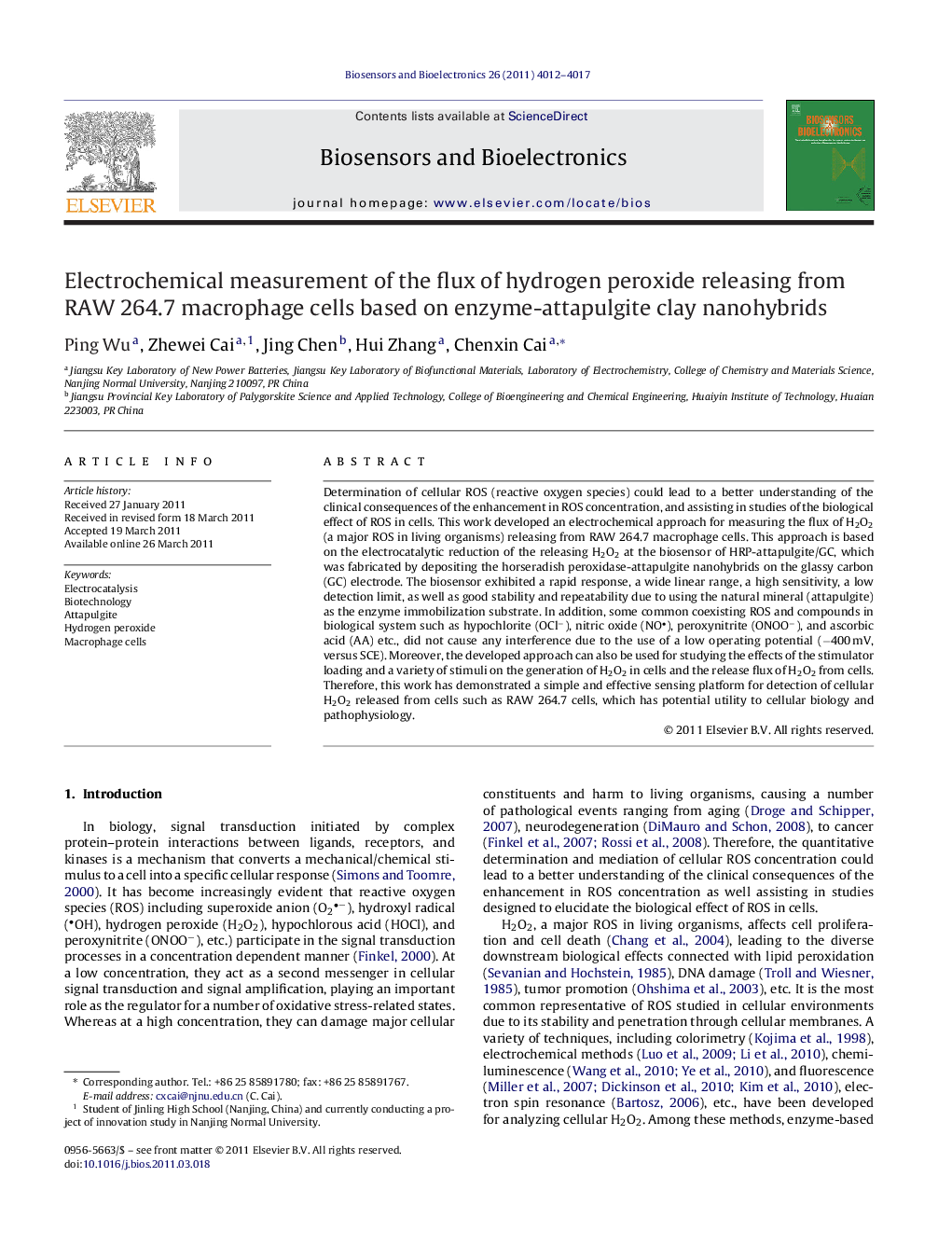| Article ID | Journal | Published Year | Pages | File Type |
|---|---|---|---|---|
| 868220 | Biosensors and Bioelectronics | 2011 | 6 Pages |
Determination of cellular ROS (reactive oxygen species) could lead to a better understanding of the clinical consequences of the enhancement in ROS concentration, and assisting in studies of the biological effect of ROS in cells. This work developed an electrochemical approach for measuring the flux of H2O2 (a major ROS in living organisms) releasing from RAW 264.7 macrophage cells. This approach is based on the electrocatalytic reduction of the releasing H2O2 at the biosensor of HRP-attapulgite/GC, which was fabricated by depositing the horseradish peroxidase-attapulgite nanohybrids on the glassy carbon (GC) electrode. The biosensor exhibited a rapid response, a wide linear range, a high sensitivity, a low detection limit, as well as good stability and repeatability due to using the natural mineral (attapulgite) as the enzyme immobilization substrate. In addition, some common coexisting ROS and compounds in biological system such as hypochlorite (OCl−), nitric oxide (NO), peroxynitrite (ONOO−), and ascorbic acid (AA) etc., did not cause any interference due to the use of a low operating potential (−400 mV, versus SCE). Moreover, the developed approach can also be used for studying the effects of the stimulator loading and a variety of stimuli on the generation of H2O2 in cells and the release flux of H2O2 from cells. Therefore, this work has demonstrated a simple and effective sensing platform for detection of cellular H2O2 released from cells such as RAW 264.7 cells, which has potential utility to cellular biology and pathophysiology.
